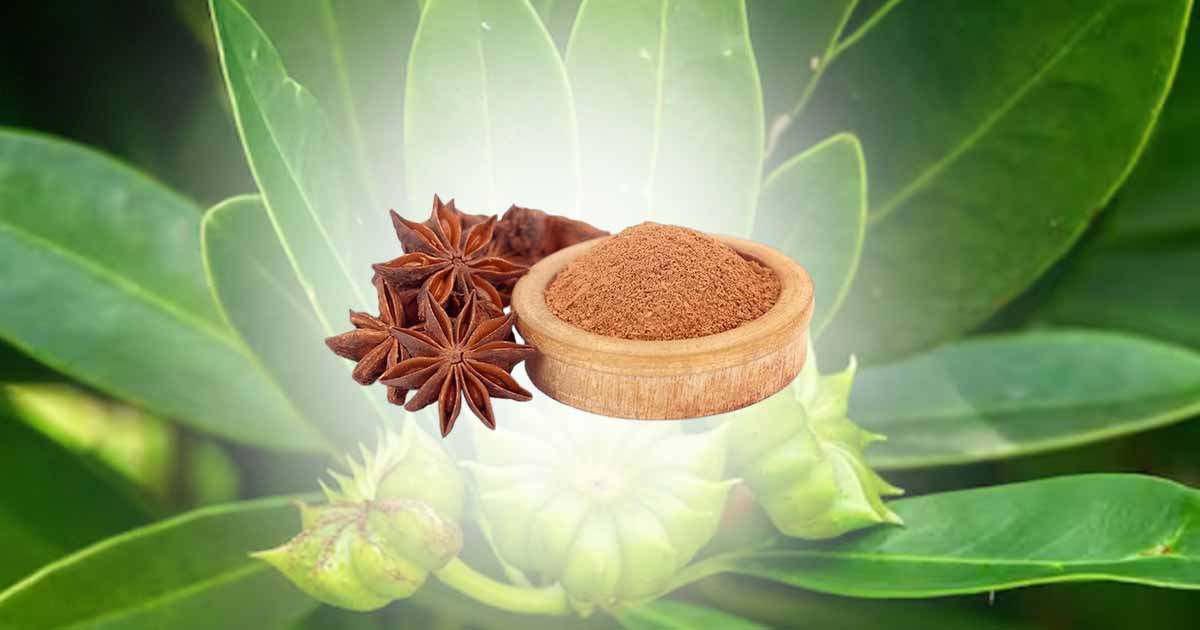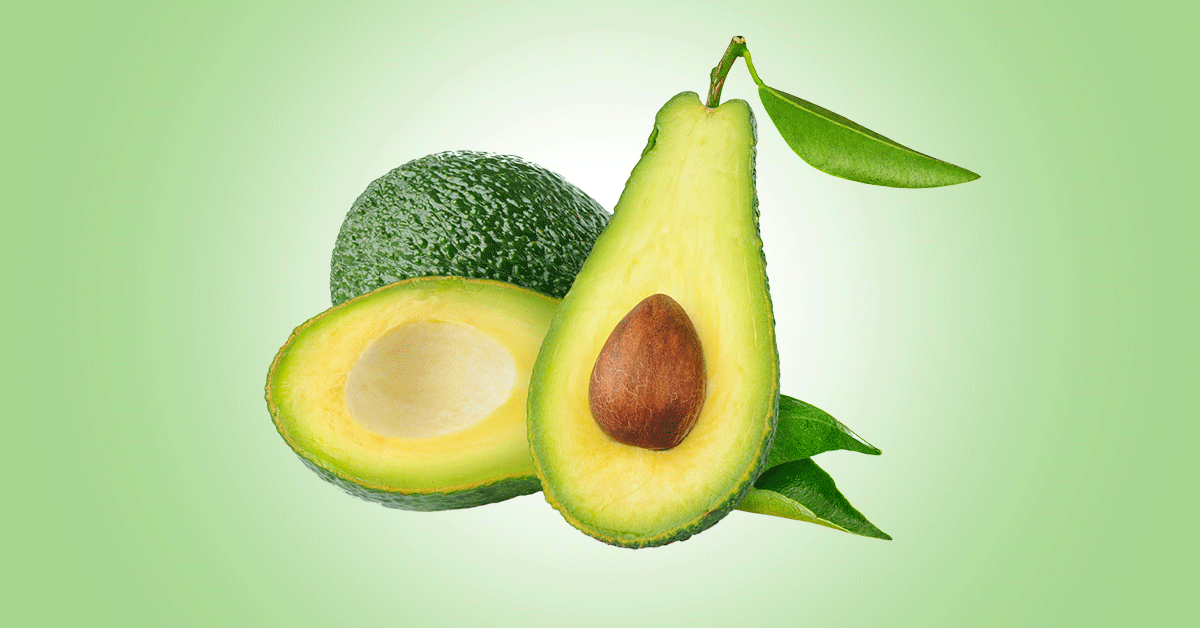Star anise, also called Chinese star anise is an aromatic plant, with a star shape and fruit used as a culinary spice, and for medicinal purposes. The plant belong to the family, Illiciaceae.
Star anise is an evergreen plant, that grows to a medium height of 8 to 15 m, and a thickness of 30 cm. The leaves are simple, alternate, bright, leathery and packed in groups. The androgynous flowers are white-pink to red or greenish-yellow. They can be single or arranged in clusters. The capsule like fruit, forms like a star, has thick skin, and has about 6 to 10 pointed pontoon-molded segments.
Each arm of the fruit looks like a seed pod. Early picking of the fruit after it ripens ensures that the essential oils content are at the highest levels. The seeds are ovoid, light brown colored, and has high oil content. The bark is white to bright gray in color. Every part of the fruit has aromatic scent. The ripe, dried seed of star anise is the utilized part.
Star anise naturally occurs in southeastern China and Vietnam. It is now grown in most of China, Philippines, Morocco, India, and European states such as Spain, France, and Italy, after being introduced from the Philippines by the English sailor, Thomas Cavendish in 1578.
Star anise has many health benefits such as antimicrobial, antiviral, gastroprotective, anthelmintic, insecticidal, carminative, spasmolytic, expectorant, antinociceptive, sedative properties, estrogenic, anti-inflammatory, and antioxidant properties.
It has been used in traditional medicine to treat emesis, lumbago, colic, abdominal pain, cholera, mouth, and tooth disease, gastrointestinal disorders.
It is also used in cuisines as a spice for meats, broth in China, India, Vietnam, and other countries. Furthermore, it is also a part of a five-spice powder mix including cassia, clove, fennel, and Sichuan pepper in equal amounts. Likewise, it is also used in teas, alcoholic beverages, jams, sweets, toothpastes.
Constituent
Star anise contains flavonoids, tannins, saponins, alkaloids, triterpenoids, reducing sugars, amino acids, anthraquinones, and proteins. The flavonoids include kaempferol and quercetin and their glycosides, trans-chalcone (essential oils).
The phenolic compounds include shikimic acids, Illiverin A, veranisatin B and veranisatin C, illicinole, and other compounds.
The fatty acids include palmitic, linoleic acid, stearic acid, myristic acid.
Star Anise Essential Oils
The most important volatile oil in the star anise is trans-anethole. It is used in the food, perfume and pharmaceutical industry because of the aroma, and sweet flavor. It is responsible for the aroma of the star anise.
Other isolated compounds include α-pinene, sabinene, eugenol, limonene, δ-3-carene, α-phellandrene, 1,8-cineole, γ-terpinene, p-cymene, farnesol, linalool, β-caryophyllene, camphene, estragole, α-terpineol, cis-anethole, trans-anethole, anisaldehyde.
The essential oils are liquorice like, with sweet odor. The flavor is similar to anise seed, and fennel oil, but is stronger.
Health Benefits of Star Anise
Antiviral activity: Some of the constituent extracted from star anise has shown antiviral activity. Shikimic acid, a natural organic compound got from the star anise pods, is the most studied compound. It is used to manufacture the drug oseltamivir phosphate (OSP), also called Tamiflu.
This antiviral drug is used to treat seasonal influenza virus types A and B, avian influenza virus H5N1, and human influenza virus H1N1.
Apart from shikimic acid, other compounds from the root of star anise such as illiverin A and tashironin A, other isolated compounds, essential oils, have antiviral effect.
Anise oil, dwarf-pine oil and chamomile oil resisted aciclovir-sensitive HSV strain KOS and aciclovir-resistant clinical HSV.
Antibacterial activity: The essential oils of star anise (trans-anethole, anisyl aldehyde, anisyl acetone and anisyl alcohol), fruit extracts, and the shikimic acid component, inhibit some gram-positive and gram-negative bacteria.
Some tested bacteria include Acinetobacter baumannii, Staphylococcus aureus, Bacillus subtilis, Klebsiella pneumoniae, B. cereus, B. licheniformis, Rhizobium leguminosarum, Bacillus megatarium, and Escherichia coli.
Antifungal activity: The essential oils, especially the trans-anethole, inhibit fungi such as Candida albicans, Aspergillus niger, Aspergillus flavus, Botryodiplodia theobromae, Fusarium graminearum, Trichoderma viride, Trichophyton mentagrophytes, Alternaria alternata, Penicillium funiculosum, P. ochrochloron, Alternaria solani, Cladosporium cladosporioides, Epidermophyton floccosum, Microsporum canis, among others.
Anti-inflammatory action: Trans-anethole reduce pro-inflammatory cells, and expression of proteins such as TARC, MDC, and cytokines IL-6 and IL-1β.
It also lowered blood pressure, reduced the activity of lactate dehydrogenase, and suppressed airway hyper-responsiveness.
Antioxidants: Star anise oil, anisic acid and shikimic acid are natural antioxidants. They protect the DNA against damage by the peroxides. They also inhibit lymphocyte cell death, and lipid peroxidation. Antioxidants protect the body against oxidative damage and diseases cancer, heart diseases, neurodegenerative conditions.
Prevents obesity: Trans-anethole in anise inhibited adipocytes browning induction, lipolysis activation. It also inhibited adipogenesis and lipogenesis.
Expectorant: Star anise and the essential oils are can be used as an expectorant for cough medications or as a stomachic. It is used to produce antitussives, due to the expectorant property and pleasant smell.
Treatment of diarrhea: A blend of chamomile and star anise reduced the looseness of the bowels and the quantity of total evacuations. It may be helpful in treating diarrhea.
Insecticidal activity: Volatile oils of star anise are insecticidal against the larva and adults of Tribolium castaneum, Botrytis cinerea and Callosobruchus chinensis. (E)-anethole also prevents tobacco beetle (Lasioderma serricorne), and fruit flies (Drosophila melanogaster)
Dosage
The recommended dosage of star anise fruit for human consumption is 3 g and 0.3 g for the essential oil.
Use of Star Anise in Cosmetic Industry
Many extracts of star anise are used in the cosmetic industry for many purposes. The essential oils are used as a fragrance, deodorizing agent, in skin-conditioning products, oral hygiene, and dental products. It has perfuming, skin conditioning, flavoring properties.
Fruit extract is used in skin conditioning, and to mask unpleasant odor. Fruit extract (fruit oil, water, and extract) has moisturizing, nourishing, perfuming, brightening, rejuvenating, revitalizing, smoothing, elasticizing, soothing, smoothing, fragrance, exfoliating, skin conditioning properties.
Side Effects
Star anise and the main essential oil, trans-anethole, is “generally recognized as safe” (GRAS). However, constituents such as veranisatin A, veranisatin B and veranisatin C, have caused toxicity such as convulsion and lethality in animal studies.
Star Anise Tea
Star anise can easily be confused with the Japanese star anise (Illicium anisatum), a similar plant that contain harmful compounds – anisatin, shikimin, and shikimotoxin.
These toxic compounds cause inflammation to the kidneys, urinary tract, and gastrointestinal tract.
This is why the U.S. Food and Drug Administration (FDA), warned against the consumption of the star anise tea as it may be adulterated with Illicium anisatum.
This could cause side effects like vomiting, nausea, convulsions, hypothermia, hypertonia, and rapid eye movements.
References
- https://www.researchgate.net/publication/338917710_Star_anise_Illicium_verum_Chemical_compounds_antiviral_properties_and_clinical_relevance
- https://mdpi-res.com/d_attachment/molecules/molecules-27-00650/article_deploy/molecules-27-00650-v2.pdf?version=1642676017
- https://www.iscientific.org/wp-content/uploads/2019/10/13-IJCBS-18-14-13-1.pdf












